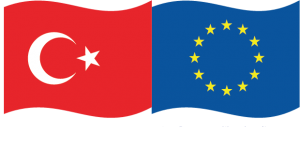Italy
Summary
Although the north of Italy is industrialised and rich, the south remained poor in spite of investment on the part of the EU.
Italy’s historical cultural and artistic values have resulted in many beautiful cities, villages and wonderful countryside. From its original role in the European Grand Tour, Italy has attracted tourists to its Roman ruins, medieval towns, gastronomy and viticulture.
Existing Roman and medieval roads have been adapted to tourism and the Via Francigena is a major part of this network. The section from the St Bernard Pass to Rome, especially the part through Tuscany, is the best-used part of the Via Francigena.
The Via Eurasia in Italy consists of the 900km section from Rome to the ports of Brindisi and Bari (from which you can travel to Albania), ending at the tip of the boot of Italy.
Detailed Description
The Kingdom of Italy was established in 1861 from a number of city states ruled by Austria, Spain and other foreign powers. But although the northern regions soon became modern and powerful, colonising parts of Africa and areas of the Mediterranean, the southern areas and islands remained poor and ungovernable. The Via Francigena route was first established in the richer, northern areas around the River Po, and now runs from the St Bernard Pass to Rome. It’s one of a number of other pilgrim routes which follow the Roman roads or medieval routes.
All along these routes are cultural treasures – from the Roman period, from the Renaissance, the Baroque, the treasures of the Papal states and great trading republics. The countryside itself offers huge variety from the Alps of the north to the olive groves of Sicily. The Italians, accustomed to tourism, have managed the rise of walking tourism well – routes are peppered with bars, restaurants and farmhouse accommodation. Tourism offices have a variety of supporting material and can help with accommodation.
History
The Romans succeeded the Etruscans as the most powerful central Italian people and developed a civilisation which spread all around the shores of the Mediterranean, which they called Mare Nostrum – our sea. Their armies dominated the provinces via a network of paved roads and public buildings, many of which survive until today. With the collapse of the western Roman empire, Italy was disputed between the eastern empire (Byzantium) and invaders from north – the Lombards and then the Franks, who strategically allied with the Papacy. In the middle ages and Renaissance periods, Italy’s central core was controlled by the Pope, the north by expansive trading city states and the south by the Norman French. The wealth of the city states and Papacy was spent on art, architecture and war, resulting in the brilliant architecture we see today.
The major north European powers, Spain and Austria, and later Napoleon, invaded and divided the country, which was eventually united under Garibaldi in 1861. The south, remaining poor, sent emigrants to colonies. Italy emerged well from World War 1, but Mussolini allied with Germany in World War 2 . Civil war enabled the Allies to invade and, by the time peace came, the country was badly damaged.
A new constitution and membership of the EU provided the basis for the Italian economic miracle, which has now slowed considerably, with high youth unemployment.
Websites and maps
The Via Francigena http://www.visit.viefrancigene.org/en/. is well- promoted through the websites of the parent organization, EAVF, and regional websites. http://www.viefrancigene.org/en/
This site has GPS points, maps and accommodation information. The route in the south is included in a less comprehensive website: www.viefrancigenedelsud.it/en/, Festivals are listed on this site, although you should check with local tourism offices www.festival.viefrancigene.org
http://www.camminafrancigena.it/it/ collects blogs, press articles and other impressions of the route, in Italian.








